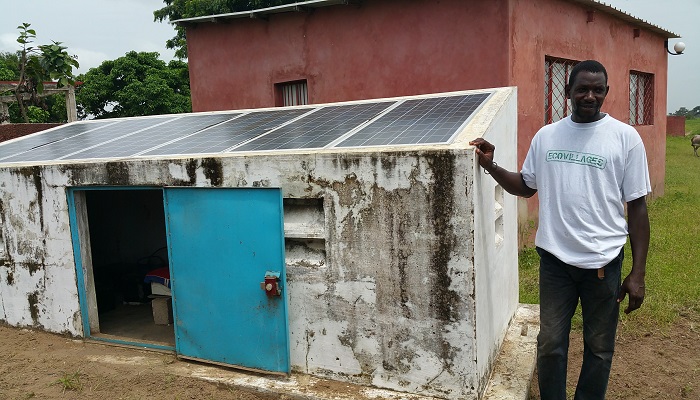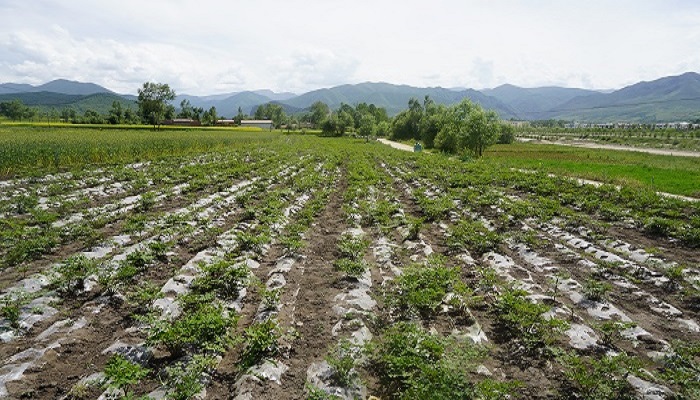You Win Some, You Lose Some - Synergies and Trade-offs of GEF Support (Part 1)
They say multitasking is counterproductive. But what about trying to achieve multiple environmental and socioeconomic objectives in one project?
Last November, we presented the conclusions and recommendations of the Evaluation of the Multiple Benefits of GEF's Multifocal Area Portfolio to the GEF Council. Particularly interesting were our findings on how synergies are created--and trade-offs mitigated—within GEF projects that explicitly target the priorities of multiple focal areas, such as biodiversity, climate change and land degradation. Based on the scientific literature, we defined synergies as "…benefits achieved in more than one focal area as a result of a single intervention, or benefits achieved from the interaction of outcomes from at least two separate interventions in addition to those achieved, had the interventions been done independently". In other words: win-win, killing two birds with one stone, or the whole being greater than the sum of its parts.
In the 10 projects that we visited in four countries, a few interventions stood out both for being common to many of the projects, and for producing benefits for multiple focal areas (as well as socioeconomic benefits) simultaneously. These were tree-planting, ecosystem protection and rehabilitation, clean energy technologies as a substitute for firewood, and a sustainable land management approach.
More interesting, we found three project design characteristics that helped produce synergistic benefits ON TOP OF what you would normally expect from implementing these four types of interventions. Here are the three that we discovered, with some examples:
Additional Benefits Integrated in Intervention Design. In many cases, additional benefits were created when interventions intentionally or unintentionally integrated more types of benefits within their design. For example, beyond the synergistic biodiversity and climate benefits from tree-planting, additional income was also a benefit in projects that chose to plant indigenous fruit trees rather than just any tree species. The choice to plant trees as hedges and firebreaks rather than as forest plantations in the Senegal Ecovillages project created green and shaded meeting spaces for villagers on top of reduced erosion from wind and an estimated 110 tons CO2 sequestered per year. When introducing sustainable land management, Brazil's Rio Rural project substituted commercial crop varieties with more drought-resistant indigenous ones through a seed exchange network. What benefited the land then also contributed to agrobiodiversity and climate resilience.
Mechanisms Created for Integrated Decision-Making. Four of five multifocal area projects put in place mechanisms at national or local level that allowed different sectors to make decisions jointly. These mechanisms provided opportunities to share ideas, resolve conflicts or overlaps in mandates, and solve problems in a way that integrated the wide range of multiple sector objectives. At the local level, Brazil Rio Rural organized community groups called COGEMs, composed of 10 to 12 members representing different sectors identified by community members themselves. In the town of Magé, which I visited, the COGEM was the first time farmers had an organized venue to talk about water, climate, sanitation and social issues. This way they could propose ideas to the municipal government as a partner in rural development.

Participatory Biodiversity Conservation and Low Carbon Development in Pilot Ecovillages, Senegal (GEF Project ID 4080).
Senegal Ecovillages, on the other hand, established a national steering committee representing the ministries of economy and finance, environment, agriculture, and energy, among others. In one instance, the committee helped resolve constraints in bringing the electricity network to Ecovillage sites to reduce the need for fuelwood through discussions with the Ministry of Energy. As a result, 100% of the Ecovillages population had electricity at the end of the project, up from 10% at the start.
Interventions Delivered Within Integrated Spatial Unit. Projects generated more synergistic benefits when they implemented a set of interventions benefiting different sectors within an integrated spatial unit, such as a village, landscape, or watershed. This means that multiple sectors are functionally linked (e.g. causes and effects, drivers and symptoms) within the geographical boundaries of these spatial units. In such settings, the outcomes of one intervention may naturally interact with or affect the outcomes of another intervention to produce synergies.
For example, Brazil Rio Rural used microwatersheds as the spatial unit for delivering interventions. In each microwatershed, they had interventions both in farms and around water sources. Since the farms and water sources are hydrologically linked, biodiversity benefits generated near water sources upstream also resulted in land benefits to farms downstream, i.e., through a more consistent spring water supply. Brazil Rio Rural's use of the microwatershed as the unit for policy planning and service delivery has now been adopted as the state of Rio de Janeiro's approach to sustainable rural development.

Integrated Ecosystem Management (IEM) Approach to the Conservation of Biodiversity in Dryland Ecosystems, China (GEF Project ID 2369).
However, no matter how well-designed a project is and how appropriate the solutions are to a multisectoral problem, we found that context matters a lot – specifically institutional capacity. Having multiple sectoral objectives in one project or program usually requires a lot of time and effort to consult and coordinate a diverse range of stakeholders. Thus we found that countries with existing institutional arrangements to integrate multiple sectors and expertise were in a better position to implement projects that generated synergies.
For example, Brazil has a national committee made up of staff from five ministries representing the conventions on biodiversity, climate change and land. They discuss which environmental projects will be funded by which donor, and may advise different stakeholders to merge their project proposals and work together on one large project if this is more cost-effective. In China, all three provincial governments benefiting from GEF's Integrated Ecosystem Management (IEM) project functioned as executing agencies that integrated departments responsible for such diverse sectors as environment, agriculture, health, and social development. Through the project, provincial planning approaches have now shifted from a top-down to a multisector integrated approach.
In Part 2 of this blog post, I will share how targeting multiple sectoral objectives within the same project can have both potential and actual trade-offs – and how some projects have gotten around this to turn potential losses into actual wins.
To read more on the synergies and trade-offs of GEF support, check out the full findings of the Evaluation of the Multiple Benefits of GEF's Multifocal Area Portfolio. You can also explore the findings visually through this Prezi I made.



